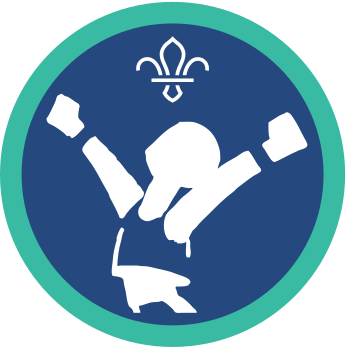
Mud, glorious mud
You’ll need
- Something to protect surfaces (for example, newspaper or tablecloths)
- Soft-bristle brush
- Soft cloth
- Proofer
- Footwear Cleaning Gel (optional)

- Everyone should go on a walk. It’s best if the route is as muddy as possible – now’s a great time to splash in muddy puddles.
On your walk, encourage everyone to think about how their feet stay dry, even though they’re walking through mud and puddles.
- When everyone gets back to their meeting place, they should, lay down sheets of newspaper. They should take their boots off and put them on the paper.
- Everyone should brush any mud and dirt off of their boots.
- Everyone should remove the laces and inner soles from their boots.
- Everyone should hold their boots under the tap and wash them well with warm running water.
- Everyone should clean their boots with soap, or a footwear cleaning gel like Nikwax.
- Everyone should scrub any remaining dirt away with a soft bristle brush, then rinse away any leftover cleaning product.
- Everyone should waterproof their boots with a proofing product like Nikwax proofer. They’ll need to get the proofer all over the outside of the boot, especially along the stitches.
Proofer makes boots water repellent again, so they’ll keep your feet dry next time you head out for a walk. Make sure you have the right one for the material your boots are made from, and follow the instructions to apply it.
- After a few minutes, everyone should buff their boots with a soft towel or cloth.
- Everyone should stuff their boots with newspaper then leave them to dry naturally at room temperature.
You shouldn’t dry boots in direct heat, as it can damage them (for example, it’s not good for the glue that holds them together).
Reflection
This activity was all about being responsible. Why is it important for people to take care of the clothing and equipment they use for outdoor activities? Cleaning equipment like boots thoroughly after a hike means they can be used for many more muddy adventures. What might happen to people’s boots if they don't clean them properly? Mud can dry out material (especially leather) so it cracks, and dirt can stop the boots from being water repellent. If boots aren’t clean, warm air from people’s feet can get trapped inside. The warm air makes people’s feet sweaty, which isn’t very comfortable – it can even lead to painful blisters. Do people usually clean their own equipment? Do people find it easy to motivate themselves to clean their equipment, or do they usually need someone else to encourage them?
Safety
All activities must be safely managed. You must complete a thorough risk assessment and take appropriate steps to reduce risk. Use the safety checklist to help you plan and risk assess your activity. Always get approval for the activity, and have suitable supervision and an InTouch process.
- Hiking and walking
Follow the guidance for activities in Terrain Zero, or the guidance for each the adventurous activity.
- Chemicals
This task involves the use of potentially harmful fluids or chemicals. Make sure you follow all relevant safety guidance. Make sure you dispose of them appropriately too, in line with safety guidance.
It’s up to you how much support you give people. More experienced hikers may be able to run through these steps without much prompting, while younger walkers may need a helping hand.
- It’s OK if some people struggle with the fiddly bits, like unlacing their boots – they can ask for help.
- Make sure anyone with sensitive skin has something to cover their hands, if the product’s likely to make it worse.
All Scout activities should be inclusive and accessible.
People could take it further by finding out how to care for other things they might use while hiking. How could they waterproof items inside their rucksack, for example? What should people do to care for a tent?


